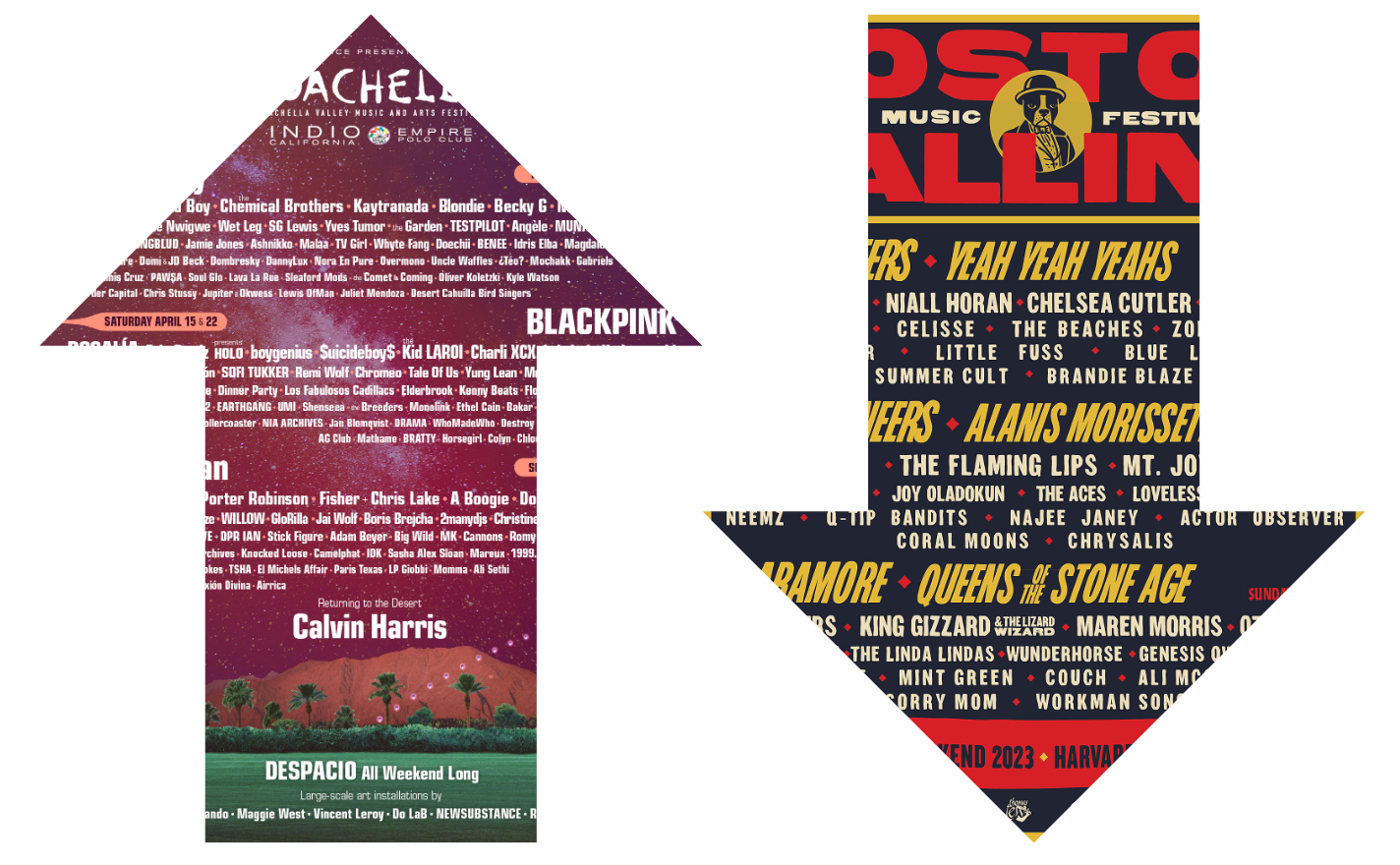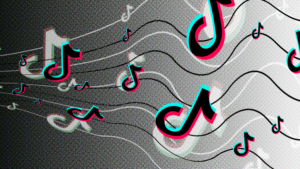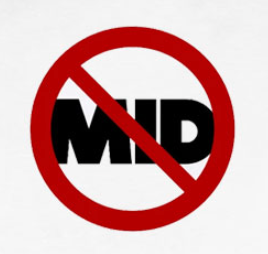With another year ushered in, festival season looms large. Some pounce at the chance to witness multiple favorite artists of theirs in a single space; some are drawn in by the unmatched feeling of discovering a previously un-encountered act; some merely seek a weekend thrill surrounded by live music; and most anticipate checking all of these boxes when attending. Whatever the reason may be, festivals across the nation begin to build anticipation for their stages at the top of the year, ultimately unveiling a lineup poster that reveals every performing artist.
All festivals replicate the same lineup poster format: the headlining acts for each day of the festival reside at the top in bold and enlarged font, which are followed by a list of remaining acts that generally descends in popularity and accordingly decreases in font size. There exists an obvious psychological tactic to this marketing format — one that understands a) where the consumer’s eyes will first wander, and b) how quickly the consumer will direct their attention to another matter. Naturally, each festival strives to bring in at least a few big-name artists that can drive up ticket sales beyond the music enthusiasts who will dish out their dollars regardless.
In case you have reached this point in the piece and believe its crux will revolve around detesting these festivals for placing more emphasis on marketing the musicians who have already made it in the industry, my argument actually hinges on an opposing belief. Headliners are paramount to the success of a festival, and if the bookers nail the right headliners, the smaller up-and-coming artists in the lineup will benefit because a more enthusiastic audience will show up and show out — even if not initially intended for those lesser known acts. Thus, while headliners do not make or break the quality of a festival and its live music output, they do impact its appeal to the typical mainstream consumer. (And, with no statistics to back up this claim, I imagine the majority of these festivals’ audiences are not intense music listeners.) Not only do headliners attract the attention of the masses, but they additionally function as a representation of the festival and how it chooses to present itself each year.
Around the same time this January, the lineups for Coachella 2023 and Boston Calling 2023 were released to the public. In some ways, comparing Boston Calling to Coachella is a moot point: Boston Calling has 5% of the attendance of Coachella, they take place in opposite corners of the country, and they attract different demographics (Boston Calling does not cater as much to social media influencers, for instance). However, it is within reason to expect any festival to reflect the ever-evolving tastes of its attendees and represent those tastes to the best of their ability.
In the case of Coachella, 2023 will mark the first slate of headliners in the festival’s history composed entirely of people of color, including its first K-pop headliner (BLACKPINK) and Latino headliner (Bad Bunny). Coachella was founded on the premise of booking “trendy artists who were not necessarily chart successes”; while this philosophy has not fully held up in its over-two-decade lifespan, the trends being acknowledged with the 2023 selections are ones worthy of this level of recognition. This past year, Latin music grew in streaming numbers at a rate of 33%, surpassing country music and claiming fourth place on the list of the most popular genres in the US. K-pop has also spread beyond the confines of its country of origin over the past decade, leaving an imprint on US popular culture through top placements on the Billboard Hot 100 (the first #1 placement awarded to BTS’ Dynamite in 2020).
Meanwhile, the 2023 installment of Boston Calling headliners… well… lacks the same attention to the changing of the guard that has taken place in the contemporary music landscape. Of the six headlining acts, five are composed of all white members, and all six would be cast under the umbrella of rock music. Despite hip-hop being the most popular genre in the country and contributing to a budding scene in and around Boston — recognized by the inclusion of a whopping four rappers in the full lineup (shoutout to the two local emcees, Najee Janey and Brandie Blaze) — there is no hip-hop artist represented among the headliners. There is no funk. There is no jazz. There is neither K-pop, nor Latin pop. The biggest acts belong to rock.
I will cut to the chase and clarify what I am not suggesting. I am not suggesting that rock does not warrant proper representation among the headlining acts of Boston Calling 2023, as I am cognizant of the many subgenres’ popularity across Boston to this day. I am not suggesting that Boston Calling has dropped the ball on representing a plethora of genres, as the three-day event will feature many talented artists — both local and from afar — who captivate audiences in vastly different manners. And, on the flipside, I am not suggesting that Coachella has defeated the final boss of equitable practices by demonstrating a consideration for representation in one year — the historical mistreatment of Coachella Valley’s farmworkers, for starters, has persisted without any self-interrogation.
What sparks my analysis of these festivals is an overwhelming passion for stories of artists who began by making music in their bedroom, made a name for themselves in their hometowns, and broke through the neighborhood membrane to reach new listeners far and wide. Boston Calling has landed numerous local artists for this year’s festival, many of whom will face their largest audience on Memorial Day weekend. Will the younger demographics of Boston, however, purchase a $150 ticket because they heard the Lumineers and the Foo Fighters would be headlining? We will have an answer in four months.




